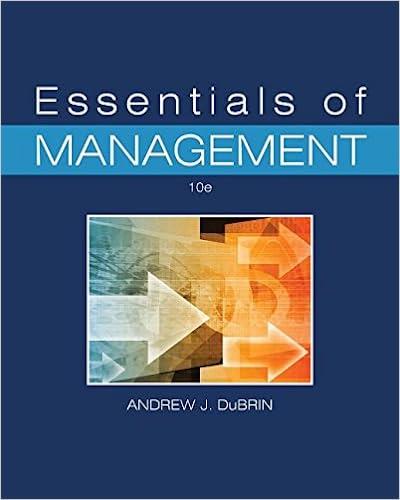Question
READ THE CASE STUDY AND ANSWER ALL THE QUESTIONS THAT FOLLOW. Coca-Cola BIG Re-Defines HR Strategy To Meet Needs Of A Changing Workforce The pandemic
READ THE CASE STUDY AND ANSWER ALL THE QUESTIONS THAT FOLLOW. Coca-Cola BIG Re-Defines HR Strategy To Meet Needs Of A Changing Workforce The pandemic has unquestionably inspired executives to digitalize at least some parts of their business. But what about companies already underway in their transformation journey? According to TeeJay Gonzales, HR Transformation Director at Coca-Cola BIG, it's the right time to reassess, reset, and redefine the path ahead. While many businesses were taking their first step toward digitalization, TeeJay Gonzales faced an entirely different challenge at Coca-Cola Bottling Investments Group (Coca-Cola BIG). A three-year-long transformation across its HR operations needed to be revisited and possibly reimagined to respond to sudden changes in work practices, business operations, and foreign markets. If this experience sounds familiar, you're not alone. The pandemic has exposed critical gaps in HR processes, work experiences, data, and technologies in most organizations. For HR leaders, this unusual transformational era is challenging them to go beyond their comfort zone to deliver HR services that are relevant now not a year ago. The Customer Enrichment and Community team from SAP SuccessFactors recently caught up with Gonzales to better understand what HR executives, like him, are facing and how this experience is inspiring a new perspective on the role and power of HR transformation. Like most companies, Coca-Cola BIG is experiencing significant change across its workforce. The only difference is that you have 28,000 employees in 39 plants across 16 countries. How have your HR goals and priorities changed since the initial start of your transformation three years ago? Gonzales: The pandemic allowed us to rethink everything from how we recruit and onboard new hires to nurture every employee's skills, talent, and potential. After three years, we realized that our strategy for deploying our HR system across all 16 countries was not viable. Only a handful of plants could adopt it well. Until now, we didn't realize that our approach to HR transformation strategy was rooted in siloed thinking, even though each bottling location operates as a separate entity. Every country has different priorities, budget restrictions, digital maturity levels, and compliance standards. So, when every aspect of our bottling operations significantly shifted within the first 120 days of 2020, we knew we had to reassess our HR digitalization agenda and rediscover what matters to the management team and workforce at each individual site. A move like this can be a bitter pill for transformation leaders to swallow I know it was for me. However, it is also a great opportunity to become a more networked organization, allowing us to absorb new requirements and capabilities for HR processes and the employee experience and deliver them in the middle of a transformation initiative. Plus, we can collaborate with business process owners from 39 locations with unique needs. Luckily, our investment in SAP SuccessFactors solutions is flexible enough to support such a significant transformation.
Question 3 (25 Marks)
Utilising the key activities involved in the strategy evaluation, assess Coca-Cola's HR digitalisation strategy being implemented and the subsequent actions of Teejay Gonzales. Furthermore, discuss the three (3) levels of strategy and assess which one TeeJay Gonzales was attempting to implement in the case study.
Step by Step Solution
There are 3 Steps involved in it
Step: 1

Get Instant Access to Expert-Tailored Solutions
See step-by-step solutions with expert insights and AI powered tools for academic success
Step: 2

Step: 3

Ace Your Homework with AI
Get the answers you need in no time with our AI-driven, step-by-step assistance
Get Started


